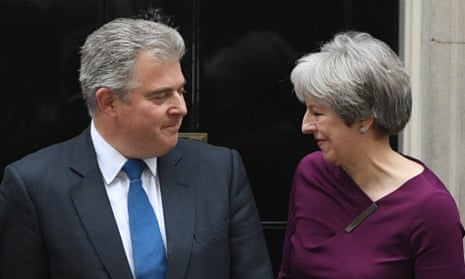In the end, cabinet reshuffles are about one thing: they are about power. Although there is always much propaganda beforehand about reshuffles helping to push through new ideas and to reset the agenda, most have a more brutal and immediate purpose – to allow prime ministers to wield their powers of patronage and show who is boss. On a reshuffle day, even the mightiest of ministers trembles at the possibility of being moved or fired. Aspiring middle-rankers are meanwhile tensed for the call from Downing Street to replace them. A prime minister’s executive power over his or her colleagues is never more strikingly revealed than in a reshuffle.
Theresa May’s reshuffle this week is no exception to that – save in one vital respect. This reshuffle showed that she is not the boss. Much touted in advance as a defining moment in Mrs May’s leadership, yesterday turned out to be only a trompe l’oeil reshuffle. Most senior ministers – the chancellor, the foreign, home and Brexit secretaries – have stayed unthreatened in their jobs, too strong, individually and collectively, to be moved or sacked. Many middle-rankers have likewise discovered that they, too, have the same power of incumbency. As official tweet followed official tweet on Monday afternoon announcing that so-and-so remains secretary of state for that or the other, the limits of Mrs May’s power were laid humiliatingly bare. At one point more departments had had their names tweaked – health and communities – than major ministers moved. As this simulacrum of a shake-up proceeded, its soundtrack should have been Peggy Lee’s classic. Is that all there is?
From Mrs May’s point of view the purpose of a reshuffle at this stage of her premiership was straightforward and conventional. She wanted to bring like-minded ministers into key posts in order to assert her domestic political priorities for the coming year and more. She wanted to show that the Conservative party and the government are capable of renewal by bringing through some younger and more diverse ministers into key posts. And she needed to consolidate her leadership position by being willing and able to upset individuals and sections of the party without suffering from it herself.
Judged by each of these aims, Mrs May put on a dismal performance on Monday. She was said to have wanted to turn the page in health by moving Jeremy Hunt. He stood firm and she could not. Mr Hunt continues with added responsibility for social care; it remains to be seen if this means anything substantive. She thought of shifting Greg Clark, who rightly opposes a trade policy that puts British business at risk. So he stayed too. That left her hoping to oust Justine Greening, who opposed Mrs May’s destructive enthusiasm for the divisiveness of grammar schools. But that meant losing exactly the kind of sensible senior female minister Mrs May was supposedly seeking to promote yesterday.
Underlying all of this is Mrs May’s unwillingness and inability to moderate on Brexit. If ability and success in office was the criterion by which ministers retained or lost their jobs on Monday neither Boris Johnson nor David Davis would still be in post and Philip Hammond’s hold on the treasury would be up for grabs. But ability and success are almost wholly irrelevant qualifications in this government. What matters most is whether Mrs May can continue to balance the party factions on Brexit. On that basis, they have all kept their jobs. David Lidington’s promotion to Damian Green’s role in the government, though without his title, is part of the same careful preservation of the status quo; like Mr Green, Mr Lidington is a pro-European. It is hard to think of any reason, other than personal scandal, that most ministers will not now stay where they are until the die is finally cast on Brexit.
Mrs May will complete her reshuffle on Tuesday. It is already clear, however, that this is not the reshuffle of a strong prime minister that it might have been if she had attempted it when she was flying high at the start of 2017. That would have been the time when Mrs May could have put a reforming stamp on the government she assembled from the wreckage of David Cameron’s fall. Instead, she called an election the country did not need or want and was punished for it. A year on, she is a weak leader of a weakened parliamentary party that is held prisoner by the rightwing instincts of its declining and ageing grassroots. In other circumstances, this reshuffle might have helped the Tories break out of their own self-imposed failures. Instead it simply restates the problem that Mrs May seems incapable of solving.
